| Date | Event | EPA AIRNOW MAP dnld:2/2000 | EPA AIRNOW MAP dnld:7/2000 | Notes | PubDate |
| 8/1/99 | 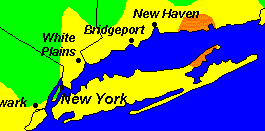 |
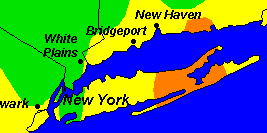 |
? | ||
| 8/2/99 | 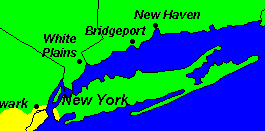 |
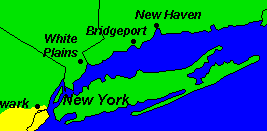 |
? | ||
| 8/3/99 | 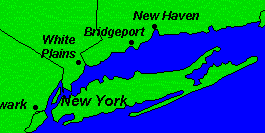 |
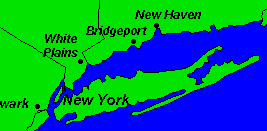 |
|||
| 8/4/99 | 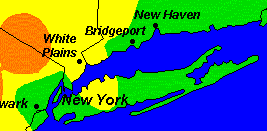 |
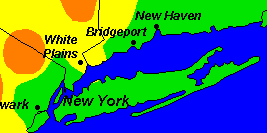 |
? | ||
| 8/5/99 | "Onset dates [for human WN virus encephalitis] ranged from August 5 to September 16... although no cases had onset in New York City after control measures were extended to the entire city on September 11. The median age of case-patients was 71 years (range: 15-87 years), with the most severe clinical cases and all fatalities occurring among older persons." | 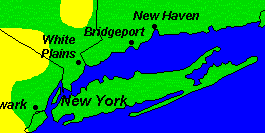 |
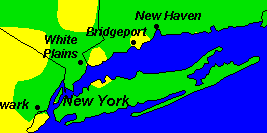 |
[Det] | CDC MMWR 10/1/99 |
| 8/6/99 | [0.1 inch rain. Negligible for mosquito larvae maturation (10 to 14 days). This is the first rain since July 2nd which was only 0.2 inch. Before that the only rain was 1.5 inches, on May 25th.] | 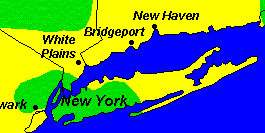 |
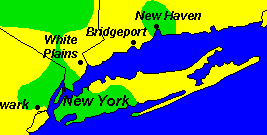 |
||
| 8/7/99 | "In early August... wildlife experts... began to notice the deaths of large numbers of crows around the state and in New Jersey." | 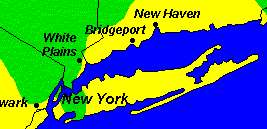 |
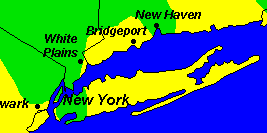 |
? | NYT 9/28/99 |
| "That silence is the sound of a mosquito-free summer. [...] As an exceptionally hot and dry summer plagues farmers throughout the Eastern Seaboard and Midwest, there has been one upside: mosquitoes are as scarce as the little puddles and pools their eggs need to hatch. Truth be told, the season is not quite mosquito free. There have been scattered swarms of the salt-water mosquitoes that breed in coastal marshes whenever high tide comes. But the far more common species that blanket inland areas each year are largely missing. [para] In Connecticut, scientists found an average of 250 mosquitoes a week in each of their 37 traps during last July; this July, it was about 75. On Long Island, Suffolk County's mosquito catch for the entire month of July was 6,152 -- compared with 27,161 last summer. In Monmouth County, N.J., mosquito- watchers counted 1,711 in traps last month, about a fifth of the typical July yield over the previous six years. 'It's been, probably, the quietest summer we've had in years,' said Martin Chomsky, superintendent of the Monmouth County Mosquito Extermination Commission. 'I would say that this is a record year in terms of the lack of freshwater mosquitoes.'" Note, this conflicts with statements after the epidemic that the population of Culex mosquitoes was exploding because of drought, when the concept of the "natural transmission cycle" needed reinforcement. | NYT 8/7/99 | ||||
| 8/8/99 | "'[Since about 8/8/99,] ...we've been getting reports on a daily basis about dead and dying crows around there [ Fort Totten, Flushing, Kings Point in Great Neck, and Throgs Neck in the Bronx, ],' Mr. Lieblein [NYSDEC] said." | 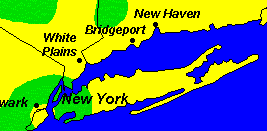 |
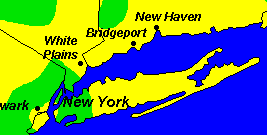 |
NYT 9/28/99 | |
| 8/9/99 | 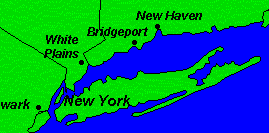 |
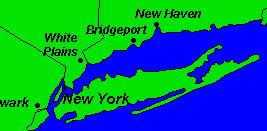 |
|||
| 8/10/99 | 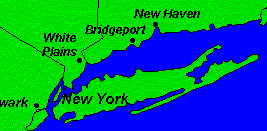 |
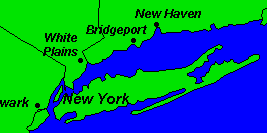 |
|||
| 8/11/99 | 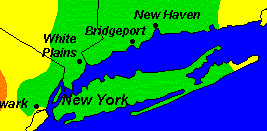 |
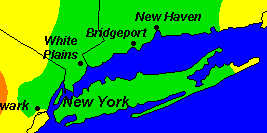 |
|||
| 8/12/99 | "The first patient had arrived [at Flushing Hospital, Queens] on Aug. 12, feverish and delirious. After three days in intensive care, he couldn't lift his arms off the bed." | 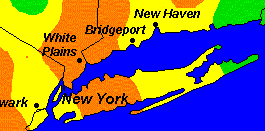 |
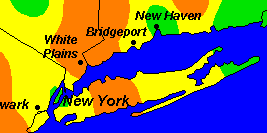 |
? Manhattan and Queens become an oasis of fresh air. |
AP and Nando Times 12/5/99 |
| 8/13/99 | 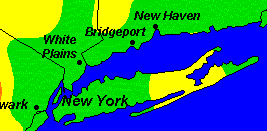 |
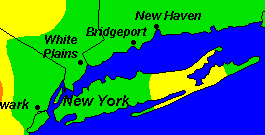 |
|||
| "In mid-August, [date conflicts with other articles. See late July] Dr. Tracey McNamara, a veterinary pathologist with the Wildlife Conservation Society, at the Bronx Zoo, began hearing reports of dead birds all around New York City. Then she noticed dozens of dead and sick crows around the zoo. "I'm sitting there saying, 'It's raining crows,' " she recalls. 'The sick ones were neurologic -- they couldn't fly, they had trouble balancing. They were sitting there with tremors.' Dr. McNamara performed necropsies, and when she opened the birds' skulls she found that they'd had brain hemorrhages; she also found lesions on their hearts." | The New Yorker, 10/18/99 & 10/25/99 | ||||
| 8/14/99 | 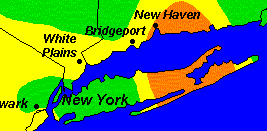 |
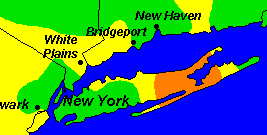 |
? | ||
| 8/15/99 | "On Aug. 15, a second [encephalitis] patient arrived [at Flushing Hospital, Queens] with the same symptoms." | 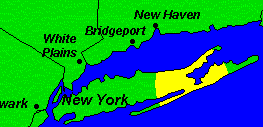 |
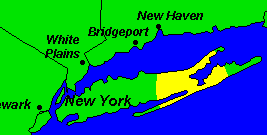 |
AP and Nando Times 12/5/99 | |
| 8/16/99 | 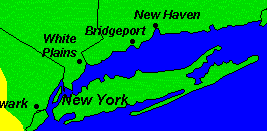 |
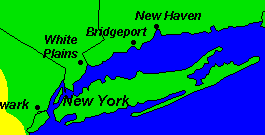 |
|||
| 8/17/99 | 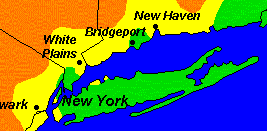 |
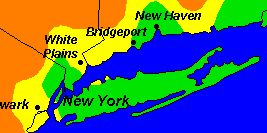 |
? | ||
| 8/18/99 | 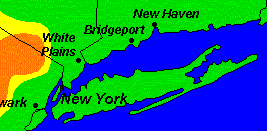 |
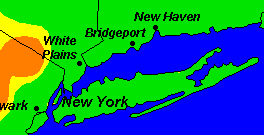 |
|||
| 8/19/99 | 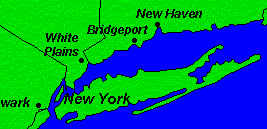 |
 |
|||
| 8/20/99 | 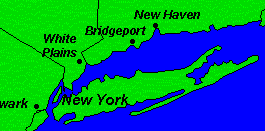 |
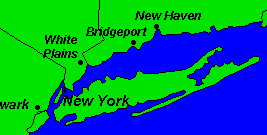 |
|||
| 8/21/99 | 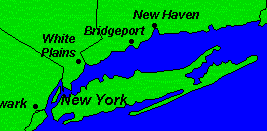 |
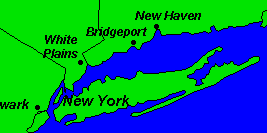 |
|||
| 8/22/99 | "But they are, and not just in Fort Totten. They have also been found dead in Flushing, Kings Point in Great Neck and Throgs Neck in the Bronx, said Robert Lieblein, a spokesman for the state's Department of Environmental Conservation. | 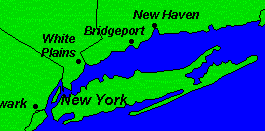 |
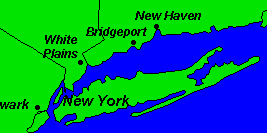 |
NYT 8/22/99 | |
| 8/23/99 | 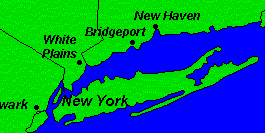 |
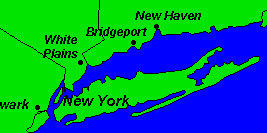 |
|||
| 8/24/99 | 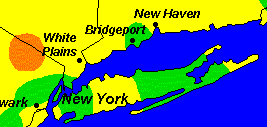 |
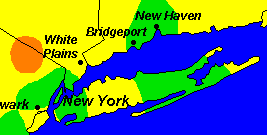 |
? | ||
| 8/25/99 | [This is the earliest possible occurance of a substantial mosquito population for this summer. Otherwise they must be considered to be 1/5th the usual number.] | 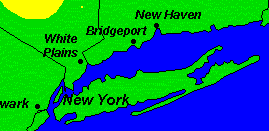 |
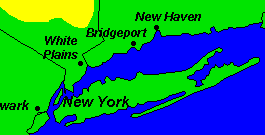 |
See 8/14/99, above. | |
| 8/26/99 | 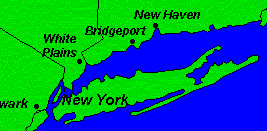 |
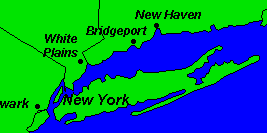 |
|||
| 8/27/99 | 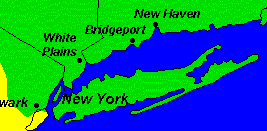 |
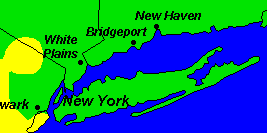 |
|||
| 8/28/99 | "On Saturday, Aug. 28, a fifth case was reported from another hospital. [para] Dr. Layton and Dr. Fine, concerned about the small but growing number of cases, went to Flushing Hospital to review the patients' charts firsthand. [para] 'As we were sitting in the hospital we heard of another case,' the sixth, Dr. Layton said. [para] The six patients' symptoms were not identical." | 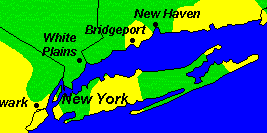 |
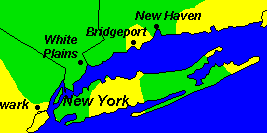 |
? | NYT 9/9/99 |
| 8/29/99 | 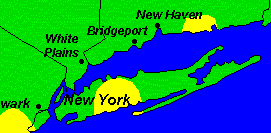 |
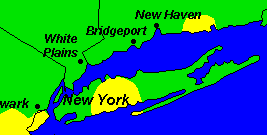 |
|||
| 8/30/99 | 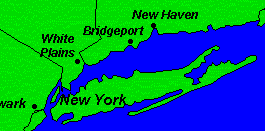 |
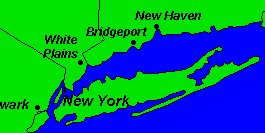 |
|||
| 8/31/99 | 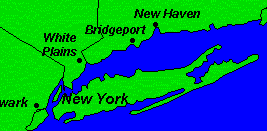 |
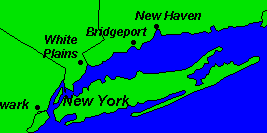 |
|||